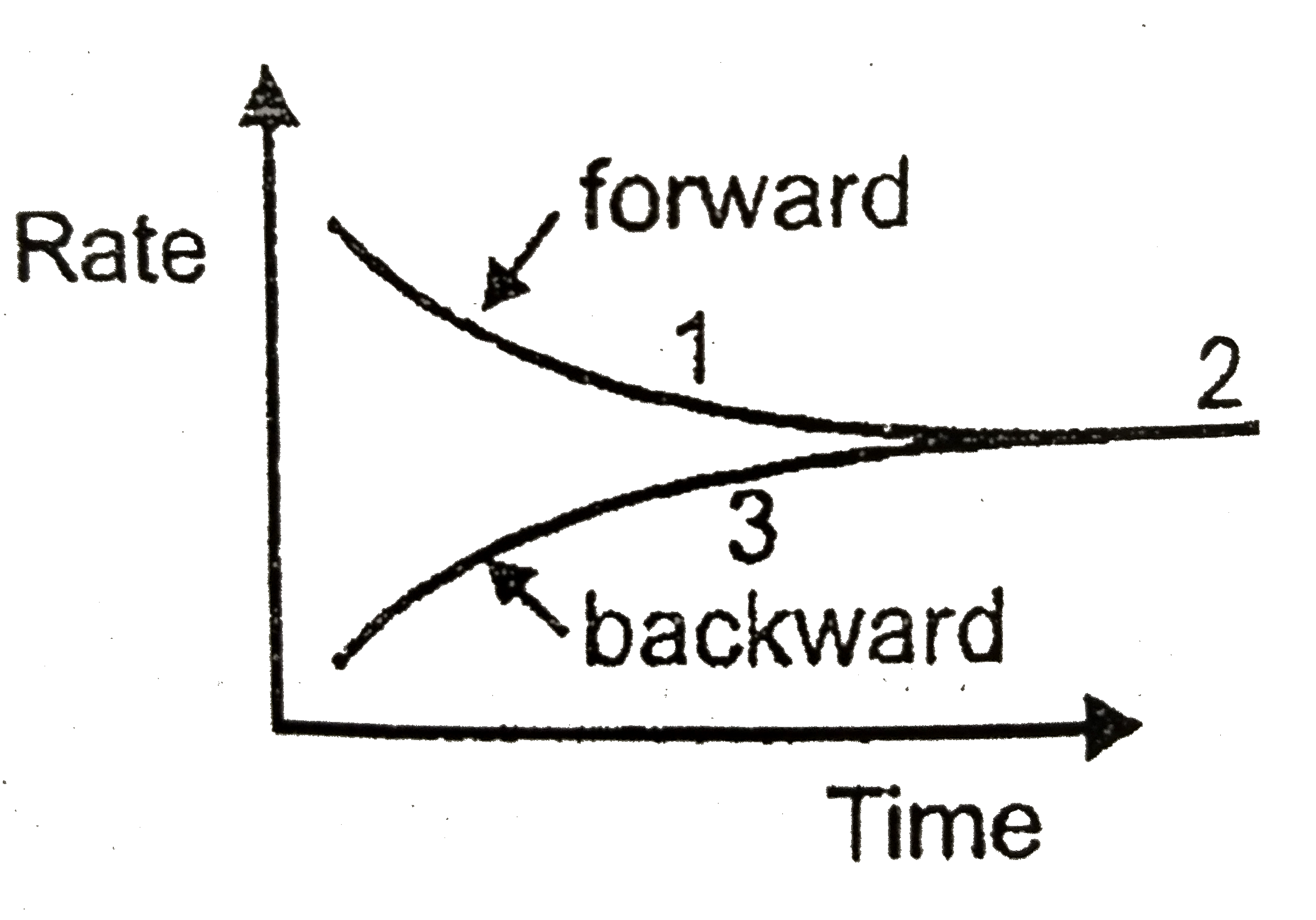Why is it useful to compare Q with K?
What is the situation when
a. Q=K b. Q<K c.Q>K?Solution in Telugu
Q.and K are compared to predict the direction of reaction :
Q = K indicates that the reaction mixture is already at equilibrium.
Topper's Solved these Questions
- BOOK - VIKRAM PUBLICATION ( ANDHRA PUBLICATION)CHAPTER - CHEMICAL EQUILIBRIUM AND ACIDS BASES EXERCISE - LONG ANSWER QUESTIONS31videos
CHEMICAL EQUILIBRIUM AND ACIDS BASES
- BOOK - VIKRAM PUBLICATION ( ANDHRA PUBLICATION)CHAPTER - CHEMICAL EQUILIBRIUM AND ACIDS BASES EXERCISE - VERY SHORT ANSWER QUESTIONS40videos
CHEMICAL EQUILIBRIUM AND ACIDS BASES
- BOOK - VIKRAM PUBLICATION ( ANDHRA PUBLICATION)CHAPTER - ATOMIC STRUCTUREEXERCISE - LONG ANSWER QUESTIONS15videos
ATOMIC STRUCTURE
- BOOK - VIKRAM PUBLICATION ( ANDHRA PUBLICATION)CHAPTER - CLASSIFICATION OF ELEMENTS AND PERIODICITY IN PROPERTIESEXERCISE - Long Answer Questions24videos
CLASSIFICATION OF ELEMENTS AND PERIODICITY IN PROPERTIES
Similar Questions
What are equilibrium processes? Explain equilibrium in Physical and Chemical processes with examples.
04:01View SolutionState law of chemical equilibrium.
01:56View SolutionExplain Rutherford 's nuclear of an atom . What are its drawbacks ?
07:15View SolutionDiscuss in detail about the classification of elements by Mendeleeff.
08:01View SolutionIf c is very small when compared to k then ((k)/(k+c))^((1)/(2))+((k)/(k-c))^((1)/(2))=
View SolutionMass action rato or reaction quotient Q for a reaction can be calculate using the law of masss action
A(g)+B(g)⇔C(g)+D(g)
Q=[C][D][A][B]
The value of Q decides whether the reaction is at equilibrium or not.
At equilibrium, Q=K
For an equilibrium process, Q≠K
when Q>K, reaction will favour backward direction and when Q<K, it will favour direction.
Answer the following questions:
For the reaction:
2A+B⇔3C at 298K,Kc=40
A 4L vessel contains 2,1, and 4 mol of A, B and c, respectively. The reaction at the same temperature02:02View SolutionMass action ratio or reaction quotient Q for a reaction can be calculated using the law of mass actionl,
A(g)+B(g)⇔C(g)+D(g)
Q=[C][D][A][B]
The value of Q decides whether the reaction is at equilibrium or not.
At equilibrium, Q=K
For non-equilibrium process Q≠K
When Q>K, reaction will be favoured in backward direction and when Q<K, it will be favoured in forward direction. For the reaction : 2A+B⇔3C at 298 K, Kc=49 A 3 L vessel contains 2, 1 and 3 moles of A, B and C respectively. The reaction at the same temperature :00:57View SolutionWrite a relation between DeltaG and Q and deifine the meaning of each term and answer the following : Why a reaction proceeds forward when QltK and no net reaction occure when Q=K . Explain the effect of increase in presure in terms of reaction quotient Q for the reaction : CO(g)+3H_2(g)hArrCH_4(g)+H_2O(g)
02:17View SolutionIn the reaction
PCl5(g)⇔PCi3(g)+Ci2(g)
a graph in plotted to show the variation of rate of forward and backward reactions against time. Which of the following is correc?

Q>KQ=KQ<K04:32View SolutionIf apq=q√k, then k= _______.
View Solution(a) Read the value of P and Q
(b) If P>Qthen k=p-q
(c )If p<q then k = p+q
(d) If p=q then k=p*q
(e ) print the answer :k
(f ) stop
If the input values P and Q are 10 and 25 then what is the oupute of the above algorhtim ?01:07View SolutionB E - K - Q, B B - H H - K N N Q Q
01:50View SolutionWhy is it useful to compare Q with K ? What is the situation when a. Q=K b. QltK c. QgtK ?
03:10View Solutionwrite a relation between ΔG and Q and define the meaning of each term and answer the following
Why a reaction proceeds forward when Q<K and no net reaction occurs when Q=K ?02:43View SolutionWhy is it useful to compare Q and K? Which of the following are conditions? Q = K
05:11View Solution

